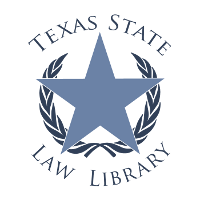Absentee Voting & Voting By Mail: A Quick Legal Introduction
Feature October 1, 2020
Interest in voting by mail has increased in 2020 due to concerns about safety during the COVID-19 pandemic, but the practice actually dates back to the American Revolution. This Spotlight post takes a look at the history of absentee voting and voting by mail as well as modern efforts to increase access to vote-by-mail procedures.
Absentee Voting vs. Voting by Mail
The distinction between absentee voting and voting by mail is important both to the history of mail-in ballots and to the current election climate. Absentee voting is available to U.S. citizens who are physically unable to vote in person, such as members of the military or private citizens who reside overseas, as defined by the Uniformed and Overseas Citizen Absentee Voting Act (UOCAVA) of 1986. Voting by mail is determined by state law and is available to all U.S. citizens for every election when ratified by a state.
Civil War Roots
The first use of absentee voting dates back to the American Revolution, but the concept entered the political and legal arena during the 1864 presidential election while the country was in the midst of the Civil War. Between 1862-1865, 20 northern states passed laws allowing soldiers to vote by mail. After the end of the Civil War, states began passing legislation to expand absentee voting to civilians.
There have been many efforts at the federal level to expand voting by mail and make absentee voting available to a wider group of voters. The Military and Overseas Voting Empowerment (MOVE) Act of 2009 expanded UOCAVA to provide voter support for military and overseas voters. The National Voter Registration Act of 1993 stipulates that state governments must provide at least three concrete opportunities for voters to participate in federal elections. Attempts to introduce universal voting-by-mail have gained increasing traction in recent years, such as the proposed 2019 Universal Vote by Mail Act, which would allow all eligible voters to vote by mail in any federal election. So far, none of these attempts have been successful.
Voting in the 2020 Election
2020 has seen a renewed interest and debate over absentee voting and voting-by-mail. Nationwide conversations about systemic racial inequities have led to calls for expanded access to voting rights, and with a contentious presidential election taking place in the midst of the COVID-19 pandemic, state laws governing early voting, absentee eligibility, and vote-by-mail procedures have been re-examined within the context of new stay-at-home orders and CDC guidance regarding COVID-19.
SCOTUSblog provides a 2020 Election Litigation Tracker that illustrates currently pending lawsuits related to election laws. The National Disaster and Emergency Ballot Act (NDEBA) of 2020 [PDF], first introduced in March of this year, stresses the impact of COVID-19 on election procedures and proposes the expansion of both early and no-excuse absentee voting for the 2020 presidential election and for future national emergencies, but this bill has not become law.
Texas entered the national vote-by-mail debate with Texas Democratic Party v. Abbott, a lawsuit filed by the Texas Democratic Party. According to Texas law, no-excuse voting-by-mail is restricted to eligible voters aged 65 or older. The Texas Democratic Party argued that limiting no-excuse voting-by-mail to eligible Texans aged 65 and older was in violation of the U.S. Constitution’s 26th Amendment. The district court issued a preliminary injunction in their favor, but the Fifth Circuit Court of Appeals issued a stay of the injunction. The U.S. Supreme Court then denied an application to lift the stay [PDF] on June 26, 2020. On September 10, 2020, the Fifth Circuit issued their opinion in the case [PDF], upholding the age requirement and remanding the case to the district court for further consideration.
A separate Texas court case centered around the question of whether a lack of immunity to the COVID-19 virus could be considered a disability for the purposes of voting by mail eligibility. Chapter 82 of the Texas Election Code sets out eligibility for voting by mail, and section 82.002 states: “A qualified voter is eligible for early voting by mail if the voter has a sickness or physical condition that prevents the voter from appearing at the polling place on election day without a likelihood of needing personal assistance or of injuring the voter's health.”
The Texas Supreme Court's ruling on May 27th, 2020, [PDF] stated that a lack of immunity to COVID-19 is not itself a “physical condition” that renders a voter eligible to vote by mail within the meaning of section 82.002. The court concluded that “elected officials have placed in the hands of the voter the determination of whether in-person voting will cause a likelihood of injury due to a physical condition.”
Federal Resources
Voting by Mail/Absentee Voting
The U.S. Election Assistance Commission provides comprehensive information and resources for voters, poll workers, and election officials on conducting and participating vote-by-mail elections.
How Mail-in Voting Began on Civil War Battlefields
This National Geographic article illustrates the long history of absentee and mail-in voting in the United States and how it pertains to elections today.
Texas Resources
Vote by Mail
The League of Women Voters of Texas compiled a useful resource collection for Texas voters who plan to vote by mail in the 2020 presidential election.
Library Resources
Election Integrity: a Pro-Voter Agenda
This 2017 paper by Myrna Pérez analyzes claims of fraud surrounding elections and how these claims affect voter eligibility, empowerment, and participation.
Check out the library’s Voting in Texas Research Guide for further information on Texas laws on voting. The Absentee & Early Voting page of the guide provides legal resources for determining eligibility to vote early or absentee in Texas.








